I belong to a group known as the Century Club. In order to be a member of this most unique group, one must meet the requirement of having sampled a minimum of 100 grape varietals. Now that is varietals, not wines. When you think about it, many people who enjoy wine seldom get beyond the six major varietals. These are, Cabernet Sauvignon, Merlot, Pinot Noir, Chardonnay, Sauvignon Blanc, and Riesling. Point in fact, when it comes to varietals, most sommeliers of my acquaintance are in the 40-50 range. I do have a couple of friends Stateside who have tasted some 80+ varietals. I am most fortunate in that my profession literally takes me around the world. To date, I have tasted 129 individual varietals. I share this fact not to impress, but to make the point that I travel quite a bit; 76 countries to be precise. I am also fortunate that areas of expertise require me to know several varietals. My forte, Italy, boasts over 700 varietals. My passion, the Republic of Georgia, is proud of over 300 recognized varietals.
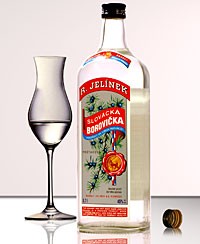 Not only am I fortunate to taste a lot of wine, I have also been introduced to several not so typical spirits and liqueurs. Today, that is precisely what we will be doing, sampling some very unique and enjoyable spirits from Eastern Europe.
Not only am I fortunate to taste a lot of wine, I have also been introduced to several not so typical spirits and liqueurs. Today, that is precisely what we will be doing, sampling some very unique and enjoyable spirits from Eastern Europe.
Our first spirit is believed to have originated in Slovakia and is known as “Slovacka Borovicka,” or simply, “Borovicka.” What exactly is Borovicka? It is a unique spirit that is produced from black juniper berries. I have selected the Czech version of Borovicka that is produced by Rudolf Jelinek. This company has been producing Borovicka in the Vizovia region over 100 years. The distillery boasts a special recipe to create the unique and distinctive aroma and flavor of their Borovicka. They believe the secret is in the number of times the black juniper berries have been distilled. The spirit must then settle for a minimum of six months before bottling. It is believed that this process allows the ingredients to blend thoroughly and achieve the sought after balance. The resulting spirit is crystal clear. Alternate recipes from other Borovicka distillers are oftentimes lightly golden in color. The recipe for Borovicka does not require oak aging. Thus begins the debate as to whether Borovicka is brandy or gin. In the glass, our Rudolf Jelinek is crystal clear. On the nose, there is a distinctive herbal aroma. On the palate, Borovicka is a bit tart, and overall, reminiscent of a dry gin. The alcohol content is 45% with a bottle price of $50. Borovicka is meant to be drunk neat, however it does make a nice martini whether shaken or stirred. Unlike gin, shaking will not bruise Borovicha.
For our next spirit, I have selected a Palinka from Hungary. This traditional Hungarian eaux-de-vie (water of life) dates as far back as the 14th century. Zwack House has long been one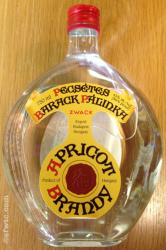 of Hungary’s premier distillers of fruit brandies. They are renown for combining traditional methods with state of the art equipment. Zwack House uses only the finest apricots from the orchards of Kecskem to produce world class eaux-de-vie such as Precsetes Barrack Palinka. In the glass, our apricot brandy is clear and almost innocent looking. At least until you experience the bouquet. The nose comes to life with robust aromas of fermented dried fruit. On the palate, the twice distilled brandy is abundant in the mellow flavors of honeyed apricot and rich cream. The texture of this spirit is quite creamy, displaying a more than generous amount of sugar. The finish is long and bold, with notes of white pepper and a wisp of minerals. For best results, serve neat as an aperitif. However, due to its high sugar content, Palinka makes excellent cocktails. The alcohol content is 43% with a bottle price of $45. If fruit brandies are your palate, Hungarian Palinka is arguably the best.
of Hungary’s premier distillers of fruit brandies. They are renown for combining traditional methods with state of the art equipment. Zwack House uses only the finest apricots from the orchards of Kecskem to produce world class eaux-de-vie such as Precsetes Barrack Palinka. In the glass, our apricot brandy is clear and almost innocent looking. At least until you experience the bouquet. The nose comes to life with robust aromas of fermented dried fruit. On the palate, the twice distilled brandy is abundant in the mellow flavors of honeyed apricot and rich cream. The texture of this spirit is quite creamy, displaying a more than generous amount of sugar. The finish is long and bold, with notes of white pepper and a wisp of minerals. For best results, serve neat as an aperitif. However, due to its high sugar content, Palinka makes excellent cocktails. The alcohol content is 43% with a bottle price of $45. If fruit brandies are your palate, Hungarian Palinka is arguably the best.
For our next selection, I decided on a spirit that hails Armenia, which lies on the crossroads of Eastern Europe and Western Asia. Mulberry is a fruit that is not very well known outside of Asia Minor. However, in Armenia it thrives and since antiquity, Armenians have been crafting a very unique spirit distilled from this delectable fruit. Once again we are confronted with the question, is it brandy or is it vodka? Ijevan, one of the country’s premier producers of fine wines and spirits, boasts a traditional recipe that uses only the finest mulberry fruit from the Tavesh region. Ijevan also uses the purest waters drawn from deep Artesian wells, and distills their brandy three times. In the glass, mulberry brandy is light gold in color. This is due to aging in barrels made of mulberry wood. On the nose, the bouquet is lively and aromatic. Notes of white mulberry, white lily, and plum prevail followed by some pleasingly light smoky notes. On the palate, this brandy is slightly sweet, but overwhelming. There are alluring flavors of white mulberry, Asian spices, and dried fruits. Though somewhat unusual to the American palate, overall, Ijevan has crafted a soft spirit that is laced with mild aromas and light on the palate. The alcohol content is 45% with a bottle price of $50. While in Armenia, I learned that the locals preferred to serve mulberry brandy in glasses that had been frozen. For my 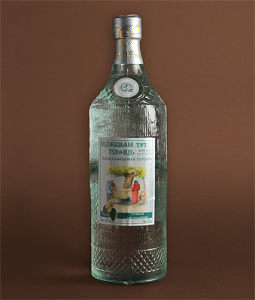 palate, glasses that have been slightly chilled will suffice.
palate, glasses that have been slightly chilled will suffice.
Lastly, we travel all the way to Azerbaijan from where our last spirit hails. Azerbaijan is the largest country in the Caucusus region, and lies on the western shore of the Caspian Sea. Azerbaijan is an ancient land that has been producing wine and spirits for several thousand years. However, with the arrival of Islam, many of the traditions and customs of these ancient peoples did not survive. Fortunately there remain 20 grape varietals that produce all of the country’s wine. Over the years, brandy and vodka production has slowly found its way back to an anxious market. One such success story is the company, Vinagro. First established by German colonists back in 1860, the company is proud of its heritage and the fact that it is the oldest distillery in Azerbaijan. Located near the high altitude lake, Goygol, Vinagro uses only glacier water in the production of its Xan VIP Grape Vodka. Grape vodka? Once again we have find ourselves in the middle of a quandary. Is it vodka or brandy? What is important to note is that Vinagro uses only the finest grapes found within the borders of Azerbaijan. Next, the distillers add a small amount of high quality Lux wheat to enhance the flavor of the spirit. To add to the confusion, Vinagro purifies its spirit by a silver richened coconut activated coal. In the glass, Xan is clear. The nose is clean and almost odorless with only the faintest hint of fruit. On the palate, Xan is mild, pure, and balanced. The finish is clean, with very little burn. The alcohol content is 40% with a bottle price of $40. This is a perfect spirit to be enjoyed neat. Xan can be used in cocktails, however it is likely that the grape spirit would be lost to the mix.
Today we shared some unique and quite exotic spirits. Rest assured that they can be easily found Stateside.
Eve Hammond Bushman and Rusty Sly, I’m in the mood for a martini. I think that I’ll give the Borovicka a whirl and see how well it mixes in in a Vesper.
“But that my friends, is another story … “





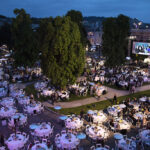

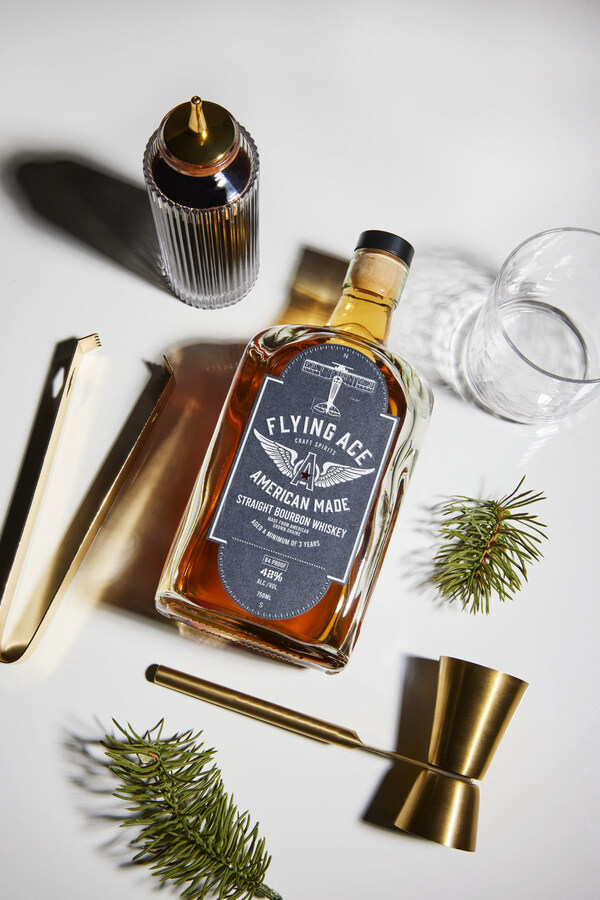


Wow, so happy I found this site. I love learning about wines and spirits from around the world and its refreshing to hear about Eastern European spirits in particular since other parts of the world command so much attention.